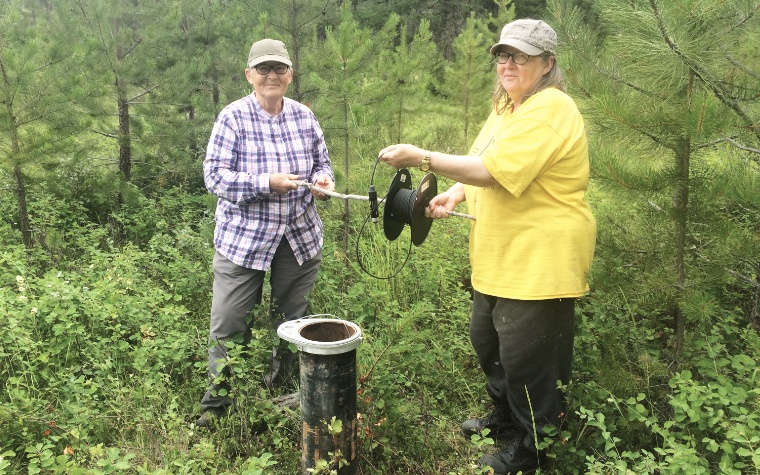
Groundwater monitoring in the Columbia Basin shows variability in response to drought conditions.
July was the hottest month ever recorded on Earth and set the stage for rampant and worsening drought impacts across Western Canada. Dry creek beds, stranded fish, parched crops, scarce feed for livestock, severe wildfires, the list goes on.
As of August 17, the Province of BC is reporting that over 80% of water basins across British Columbia remain at a Drought Level 4 or 5. Alarmingly, the latest update reveals a significant jump in the number of watersheds at Drought Level 5 from 32% to 56%. This means over half of B.C. watersheds face “almost certain” negative impacts. This growing crisis points to the need for more comprehensive water monitoring to help support and direct proactive water management.
Living Lakes Canada’s Columbia Basin Groundwater Monitoring Program is collecting long-term data on groundwater levels to track annual and seasonal changes. Many municipalities and rural property owners rely on groundwater, yet little is known about how climate and other impacts like land use are affecting the water underground.
The program now has some wells with up to six years of data, providing us with information on how aquifers are responding to surface events.
- This spring, water levels in some wells were the lowest recorded to date.
- In one of the wells, we’ve seen a decreasing trend over the last six years.
- In other wells, peak water levels occurred earlier this year than in previous years. This corresponds with this year’s smaller winter snowpack and unseasonably early snowmelt
Notably, the program’s data is showing that water levels in aquifers higher up in the mountains peak at different times than valley bottom aquifers. This means that conditions at one select well aren’t necessarily representative of groundwater conditions across an entire region. Site-specific information is essential to inform decision-making for water security.
The program partners with well owners to establish a cost-effective network of Volunteer Observation Wells across the Canadian Columbia Basin region. This work complements the monitoring done by the Provincial Groundwater Observation Well Network. Although there are over 230 active observation wells in the provincial network, there are only six wells in the Columbia Basin. The Living Lakes Canada program has established and is currently monitoring 32 Volunteer Observation Wells across the region.
Across Canada, aquifers vary in size and complexity. In the mountainous Columbia Basin, many aquifers are small and fragmented. Each responds differently to climate conditions and water usage demands. The Living Lakes Canada program is addressing the gaps in groundwater monitoring across this complex landscape by continuing to collaborate with water supply operators, First Nations, municipalities, ranchers, land trusts, post-secondary institutions, and private landowners to collect and share groundwater level data.
To learn more about the program, visit https://livinglakescanada.ca/project/columbia-basin-groundwater-monitoring-program/.
Living Lakes
